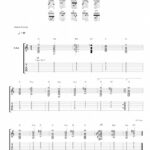Guitar EQ pedals, or equalizer pedals, are essential tools for sculpting your guitar’s sound. They operate by allowing you to adjust the volume of different frequency ranges in your guitar signal. These frequency ranges are divided into bands, and the number of bands on an EQ pedal determines the precision of your tonal control. Let’s explore the common types of Guitar Equalizer Pedals available on the market.
Different Types of Guitar EQ Pedals Based on Bands
The primary variation in guitar EQ pedals comes down to the number of frequency bands they offer. Fewer bands mean broader control over larger sections of the frequency spectrum, while more bands provide finer, more precise adjustments.
3-Band EQ Pedals
3-band EQ pedals, such as the EarthQuaker Devices Tone Job, offer a simplified approach to EQ. These pedals typically control bass, mid, and treble frequencies. They are excellent for making broad adjustments to your overall tone, making them user-friendly, especially for guitarists new to equalization.
5-Band EQ Pedals
Stepping up in control, 5-band EQ pedals, like the Mesa Boogie Graphic EQ Pedal, provide more granular control. They split the frequency range into five bands, allowing for more targeted shaping of your guitar’s sound. This offers a balance between simplicity and precision.
7-Band EQ Pedals
A popular choice for many guitarists is the 7-band EQ pedal. The Boss GE-7 Graphic Equalizer is a classic example and a widely recognized guitar EQ pedal. Seven bands offer a significant degree of control, allowing you to fine-tune your tone across a broader spectrum and address specific frequency issues or desired enhancements.
10-Band EQ Pedals
For the ultimate level of precision, 10-band EQ pedals, such as the MXR 10 Band EQ, provide the most detailed control. With ten frequency bands at your disposal, you can make very specific and nuanced adjustments to your guitar’s tone. This is ideal for guitarists who want to deeply sculpt their sound and address very specific frequency ranges.
Graphic EQ Pedals: Visual Tone Shaping
Many guitar EQ pedals, like the Boss GE-7 and MXR models mentioned, are graphic EQs. Graphic equalizers present a visual representation of your EQ curve using sliders. This visual interface makes it intuitive to see and adjust your EQ settings. By moving the sliders up or down, you can boost or cut specific frequencies, and the visual layout provides an immediate understanding of the overall EQ shape you’re creating. If you prefer a hands-on, visually-driven approach to tone shaping and want to see exactly how you are manipulating your guitar signal, a graphic EQ pedal is an excellent choice.
Ultimately, the best guitar equalizer pedal for you depends on your needs and desired level of control. Whether you prefer the simplicity of a 3-band EQ or the detailed precision of a 10-band, understanding the different types of guitar EQ pedals is the first step in mastering your guitar tone.


